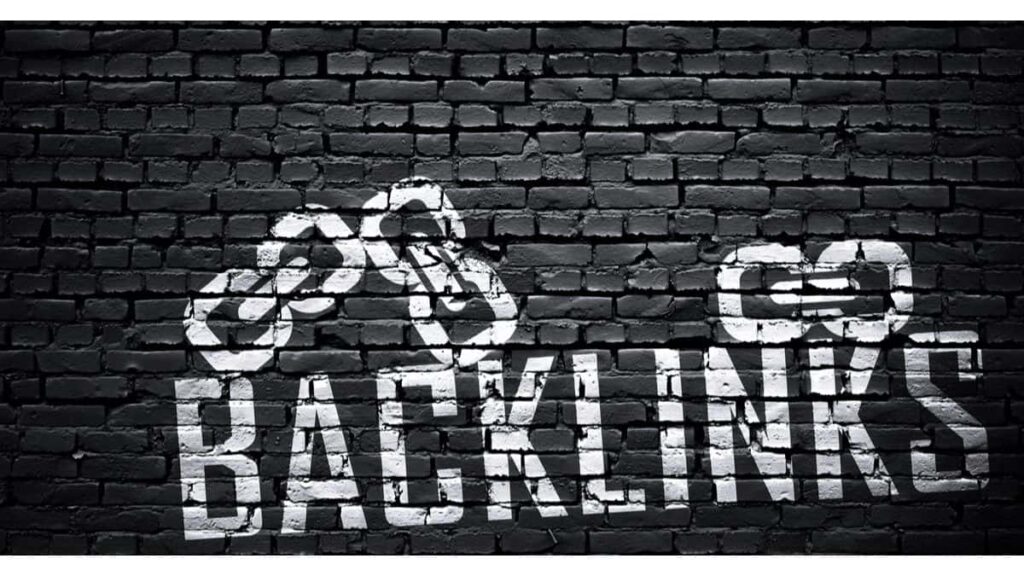Check Backlinks for Free
FREE Backlink Checker Tool
With this backlink checker tool, you can see the top backlinks pointing to a specific domain. Quality backlinks can help you outrank your competitors and get you additional referrer traffic. Enter a URL below to check the number of backlinks you have, anchor text, and more.

Why Use our Free Tool to Check Backlinks
Understanding your websites backlink profile is a great way to ensure that you are managing the authority of your site. Our tool is a great way to check backlinks for quality and ensure that you are getting the best value from your backlink profile. Read on to learn about backlinks.
Are Backlinks Required for SEO Success
As a content creator, you already understand just how important it is to present expert, authoritative, and trustworthy content to your readers. Sure, while the words you put onto the canvas are crucial, one element often put on the backburner (or ignored altogether) is links. Between backlinking, internal linking, and outbound links, it’s vital to understand that each one has its place in the content you are creating, especially if you are working hard on building your website authority and adhering to the Google EAT guidelines.
Most brands already place both internal and outbound links in their content because they understand that it’s a must if you’re trying to move potential prospects through your website, as well as build trustworthiness. Backlinking, however, is often an afterthought. Before diving into the details of why they’re important and how to implement them into your content, you need to take a moment to understand why they’re different from basic linking practices.
What’s the Difference Between Links and Backlinking?
No two links are created equally. Sounds a tad dramatic – but it’s true. Most content creators understand that you need to include external links to back up any claims you make, and that internal links are essential to help your prospects navigate your site and find the solutions they need.
These different types of links play a much more significant role in your strategy than you may think, and it’s important that you take a moment to understand each type of link and how each one can impact your websites.
Internal Links
Internal links are the most common links you’ll find on any website. They help guide your website visitors from one page to another – all within the confines of your website. For example, if you came to this site in search of information on link building, you’ll likely come across a blog that is highlighted in pink. When you click on that hyperlinked text, it will take you to a blog piece titled “What is Link Building in SEO? And Do You Need it?”
Internal linking requires strategic thought, because you want to ensure you’re linking to items that are relative to the topic at hand. Otherwise, you could be in violation of Google’s quality guidelines.
Outbound Links – AKA External Links
Outbound links are defined as links that lead your readers to a website outside of your own.
One of the main reasons beginner content creators avoid these links is because they believe that to be an authoritative figure, they need to keep readers on their page – not direct them elsewhere.
While it’s true you want to keep readers on your page, it’s vital to note that the right outbound links can actually play in your favor, especially if used to help you prove a point or back up a claim you are making. The key is balance and knowing which outbound links will benefit your content and voice.
Inbound Links – AKA Backlinking
Inbound links, also referred to as backlinks, are links found on websites outside of your own that link back to your website. This could include:
- Links from author blurbs found on guest blogs that lead back to your homepage.
- Free tool links that lead from a blog to a tool you’ve provided on your website.
- Links to your content that others have found beneficial in helping them build their own authoritative voice.
Many content creators don’t give their backlinking strategy a second thought until after they’ve established a solid content library. While that’s not a terrible plan, there are better ways to approach backlinking.
How Do Links Impact Your Website?
Aside from building a trustworthy, authoritative voice to help you back up your claims and give off the vibe of an expert creator, links can have a significant impact on your website as a whole. Now that you understand each type of link, here’s what role they each play in your website’s overall success.
The Role Backlinking Plays in SEO
While backlinking is typically a second thought for a vast majority of content creators, this aspect of your linking strategy is arguably one of the most important parts of the strategy. Why? Because it plays a significant role in your website’s domain authority and overall website ranking.
The easiest way to visualize backlinks is as “votes of confidence” from a website outside of your own. When external sites choose to link back to your website, in most cases it shows their readers – and Google as well –that this brand agrees with and trusts what you have to say.
If you’re starting to notice that your site is being linked to, you want to pay careful attention to the type of link they are using. Look at the HTML link and see whether they are using “nofollow” or “dofollow” format
Dofollow Links
When a link that leads to your website includes a standard link, it’s known as a “dofollow” link. It looks something like this:
This direction tells Google that the site sees you as a trustworthy, authoritative expert in your niche. That’s because these links allow search engine crawlers to move between links and register who is linking to who.
Now, remember – not all links are created equal. So, while you may have several “dofollow” links that lead to your website content, if the original site is considered poor quality or has a low domain authority score, then Google may see this as a poor attempt at taking advantage of your linking strategy and could penalize you for it.
Nofollow Links
A “nofollow” link is just the opposite of a “dofollow” link. They have a similar physical appearance, except they include a small HTML coding piece that informs search engine crawl bots not to follow the link. A typical “nofollow” link will look something like this:
Anchor Text
It’s that little piece of coding, “rel=”nofollow,” that tells search engines that, despite linking to it, the external site doesn’t trust your website.
Now, what exactly does that mean for you? It doesn’t mean that these links are harmful. In fact, according to Google, these types of links simply won’t affect your site’s position in search engine results. That means you won’t garner any ranking points, but it won’t hurt your score either. It simply shows the search engine that the external site doesn’t want to associate a relationship with your website.
So, does that mean that “nofollow” links are otherwise bad for you? Absolutely not. While search engines may not crawl these links and associate them with your website’s authority, they are still clickable links that will bring people to your website. These links can be beneficial for:
- Generating traffic to your website.
- Building brand/business awareness.
- Encouraging customer engagement.
Why Other Links Matter as Well
Backlinking is a crucial contributor to your website’s success. However, that doesn’t mean you should neglect internal and outbound links, as they also play a vital role in your website’s overall authority and can significantly impact your overall trustworthiness and authoritative voice.
- Internal Links – These links play a vital role in your on-page SEO, because they help search engine crawl bots to navigate and index your pages.
- Outbound Links – These links are essential in helping you build that trustworthy, authoritative voice you need to be considered an expert in your given industry/niche. Link to other strong sites that help you prove a point or back up a claim you’ve made. Pay careful attention to the website domain authority and choose those with a higher-ranking score, as those have been vetted by Google as authoritative/trustworthy brands.
- The key to genuine website success is a well-thought-out mixture of backlinking, internal, and external/outbound links, which is why it takes time to craft a successful link-building strategy.
Does it Really Matter if These Links are Followed?
This is something of a loaded question. While links are a crucial part of your website’s success, that doesn’t necessarily mean they need to be physically clicked on for you to see success.
For example, Google crawl bots don’t physically click on your links, and they don’t contribute to your page analytics. They simply “crawl” from page to page to see what’s good and what’s functioning as it should, and then use that information to determine if your content is worth ranking.
However, if you are looking to increase your website traffic, lead generation, or analytic numbers (clicks, click-throughs, etc.), you need visitors to physically click on those links.
So – yes, you want your links followed. However, as long as they are being appropriately utilized, Google crawl bots will still consider them useful for ranking purposes even if they’re not clicked on.
5 Types of Backlinks to Consider
Most brands take the time to consider their internal/external linking needs during the content creation stage. Backlinking, however, tends to get put on the backburner, with approximately 66.31% of pages having no backlinks whatsoever, despite the fact that Google states that backlinks are one of their top ranking factors.
If you’re looking to start building upon or initiating a backlinking strategy for your website, then you’ll want to make sure you are considering the many different types of backlinks available to you, including:
Business Profile Backlinks
This is a brilliant backlinking opportunity that doesn’t often get enough attention. Business profile backlinks can come in several different formats. One of the most basic is filling out your business’s online listings on sites such as Yelp, Google My Business, Bing Places, Yahoo Local, and others. To make this a genuine backlink, you need to make sure you include a link to your brand’s website homepage.
Another excellent way to build business profile backlinks is by having brands that work with you, or otherwise mention you on social media, use your social media tag and/or insert a link directly into their post that leads them to your site. While a direct website link is easiest when it comes to getting people to your website, at least having a link to your social media pages gives potential leads a quick reference as to who you are and what you do.
Editorial Backlinks
An editorial backlink is one of the most frequently utilized forms of backlinking because it’s so simple. These instances involve a website linking to your content/website from within a piece of high-quality content. In most cases, this type of link will be shared as part of a blog talking about something relative to your industry/niche. The link to your website serves as a piece of evidence to help the external site prove a point or back up a claim that they’ve made.
Free Tool Backlinks
Another excellent example of a backlink is sharing a free tool you’ve created that may be useful to another site’s audience. You’ll often see these types of links included in “best of” articles.
Guest Blogging Backlinks
If you’re looking to get your name out there and want to take your backlinking up a notch, then you can work on your outreach and approach like-minded blogs about opportunities to guest blog on their site. While many blogs will have strict guidelines on linking to your own website, they’ll at least allow you to link back to your main website as part of an author blurb at the end of the post. Even limited to a single link back to your website, though, if you’re providing high-quality, authoritative content to readers, that one link could be more than enough to encourage them to visit your site and explore your brand at length.
Webinar Backlinks
As video content continues to gain popularity, consider the many ways you can repurpose your online webinars into content that continues to bring in quality traffic. One way to do that is to turn your webinar into an informational resource (if it’s not a part of a paid series or the like, of course).
You can upload a webinar to your website as an evergreen piece of content, and if you include a transcript of the webinar, your resource will become that much easier to find. Once people find it, they will be more inclined to create/share a backlink to your video content because it helps them prove a point and/or gives their audience some additional insights.
How Can You Get Links Back to Your Website?
Unlike internal and external linking, backlinking takes a bit more effort than simply inserting links into your own content. There are several ways you can approach others in hopes of collaboration. However, you must do the outreach first.
The good news? Outreach is simpler than ever with so many available channels to work with, such as email and social media. Keep in mind that you can’t expect everyone to be open to collaboration right off the bat. You’ll need to network and build real relationships with those you want to work with.
Strategic backlinking takes time and effort, and only once you’ve built a relationship with like-minded individuals in your industry/niche will you be able to start proposing collaborative backlinking opportunities. Just remember, if the other party doesn’t see what’s in it for them, they are less likely to agree to the collaboration.
Need some help getting started with the outreach process? Here are a few helpful tips:
Create high-quality, authoritative content
This is crucial because you want those on your outreach list to see that you don’t just talk the talk, but can walk the walk. You can also build a library of content ideas to cater future messages to specific content ideation discussions.
Identify relevant prospects
These are the individuals you want to approach with your collaboration proposal. They can be people who have mentioned you in the past without your prior knowledge, or those within your industry/niche who lack important information that you could provide them or their audience with.
Have your incentives at the ready
Before you start writing and sending out your proposals, you’ll want to make sure you have your incentives lined up and ready to go. Remember, these individuals will want to know what is in it for them – whether it’s a reciprocal backlinking opportunity or a guest blogging opportunity.
Have strategic message templates at the ready
Before you start the outreach process, build up several different email templates. You’ll want to be able to address a variety of individuals with varying needs of content. Never use the exact same message template for everyone on your outreach list.
OUR CORE PRINCIPLES
CADENCESEO IS HERE FOR YOU
Communication
Communication is the key to success of any Digital Marketing Campaign.
Open and Honest
We believe that having and open and honest chain of communication creates an environment that creates success.
Trust
Any business relationship not built on trust is destined to fail.
Our Responsibility
Gaining your trust is our responsibility and is not taken lightly.
Flexibility
We understand that every situation is going to be different and needs to be treated as so.
Agile
When things change, we need to be able to do the same. Flexibility is key to being agile.
Freedom
We never want our clients to feel stuck.
No Contracts
Each and every client works essentially on a month to month basis.

